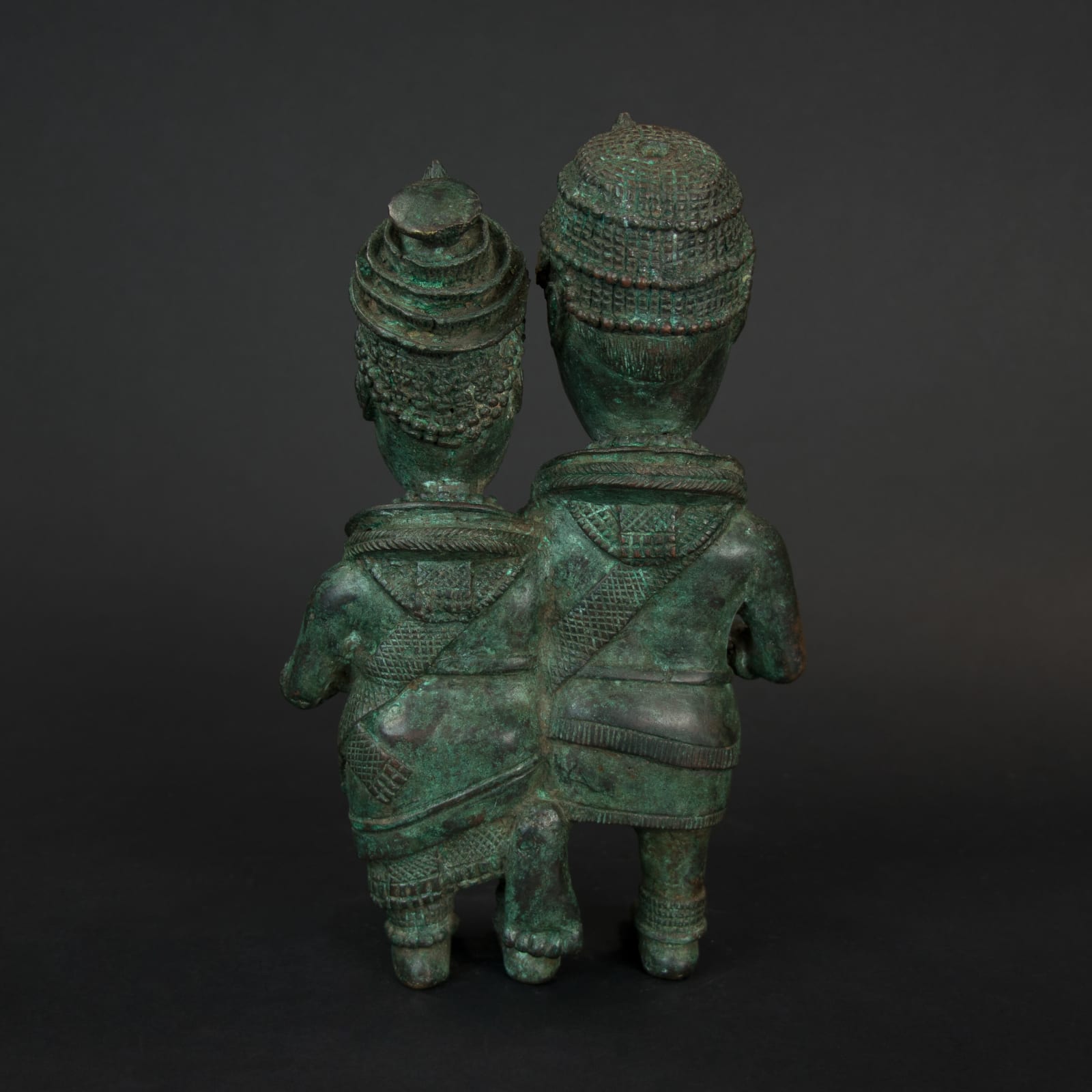Ife King and Queen, 14th - 16th century CE
Bronze
28 x 17 x 6 cm
11 1/8 x 6 3/4 x 2 3/8 in
11 1/8 x 6 3/4 x 2 3/8 in
ES.6483
Further images
This striking bronze sculpture reflects a major tradition in West African cultural heritage, in terms of aesthetics and technological innovation. The Ife manner of depicting the human form was unique...
This striking bronze sculpture reflects a major tradition in West African cultural heritage, in terms of aesthetics and technological innovation. The Ife manner of depicting the human form was unique in its time and has been constantly referred back to by every major school of artistic representation. Within the Ife-Yoruba-Benin polity the features have been absorbed and are often reiterated in agglomerative sculptural forms, as in the present case.
This piece represents the King (One) and Queen, depicted advancing together -arm in arm- heavily clad in jewellery. As usual in Ife iconography, the brows are relatively light, but the lips, nose and chin are thick and robust. The royal couple wears ornate crowns, made of fibrous material in vertical orientation with a medium brim and a central diadem with a spike (made of what appears to be a woven material) rising vertically into the air. It superficially resembles a coral crown as worn by later Benin kings, although the diadem/spike arrangement is uniquely Ife.
The piece was produced using the comparatively crude method of cire perdue (lost wax) casting, in which a single, unique object is created from a single-use mould. It is crude in that most cultures are unable to make it especially thin in the mould, in order to capture fine, delicate surface detail. Early European explorers were so astonished by the fineness of these pieces that they refused to believe that the African populations had manufactured them, despite the fact that “classic” African features are depicted in every case. The Ife were also able to cast their pieces in almost pure bronze, without recourse to zinc that is used today to make the metal flow easier; they achieved this using multi-section crucibles and complex moulds, although the finer details of their craft still elude us. In any case the high content of copper in the bronze alloy is evident in the diffused oxidation that gracefully covers the sculpture.
This is an artefact of the highest museum-level quality, suitable for the most discerning collectors and connoisseurs.
This piece represents the King (One) and Queen, depicted advancing together -arm in arm- heavily clad in jewellery. As usual in Ife iconography, the brows are relatively light, but the lips, nose and chin are thick and robust. The royal couple wears ornate crowns, made of fibrous material in vertical orientation with a medium brim and a central diadem with a spike (made of what appears to be a woven material) rising vertically into the air. It superficially resembles a coral crown as worn by later Benin kings, although the diadem/spike arrangement is uniquely Ife.
The piece was produced using the comparatively crude method of cire perdue (lost wax) casting, in which a single, unique object is created from a single-use mould. It is crude in that most cultures are unable to make it especially thin in the mould, in order to capture fine, delicate surface detail. Early European explorers were so astonished by the fineness of these pieces that they refused to believe that the African populations had manufactured them, despite the fact that “classic” African features are depicted in every case. The Ife were also able to cast their pieces in almost pure bronze, without recourse to zinc that is used today to make the metal flow easier; they achieved this using multi-section crucibles and complex moulds, although the finer details of their craft still elude us. In any case the high content of copper in the bronze alloy is evident in the diffused oxidation that gracefully covers the sculpture.
This is an artefact of the highest museum-level quality, suitable for the most discerning collectors and connoisseurs.











